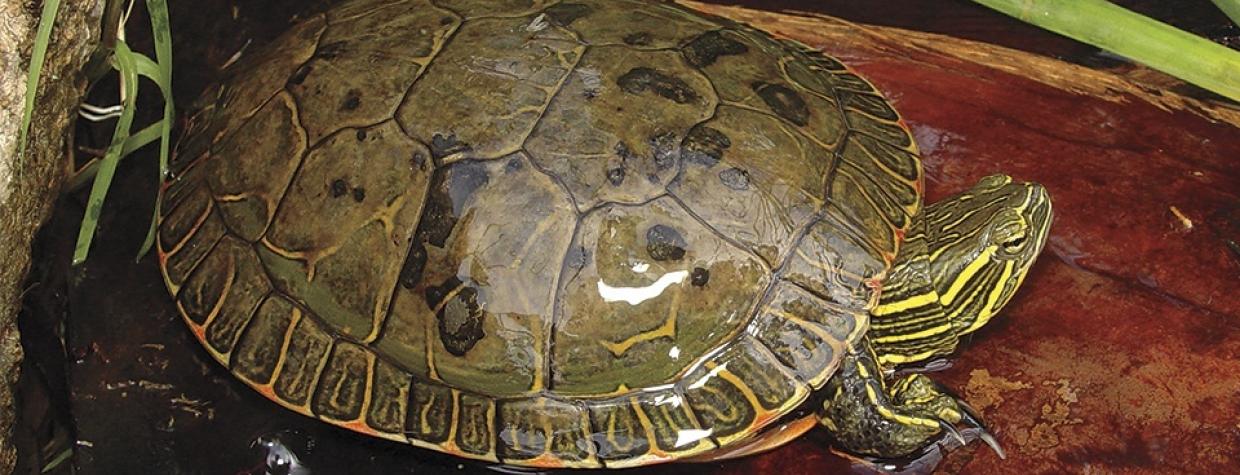You don't have to travel to the wilderness to see a Western painted turtle. These aquatic creatures, indigenous to the Lyman Lake area of Northeastern Arizona, are now found in canals and reservoirs near Phoenix, Tucson and Cottonwood.
Western painted turtles spend their days basking on rocks, logs and mudbanks in bales, or groups, of a dozen. Temperature regulation via sunlight helps support digestion. Similar to most water turtles, Western painted turtles have a fixed tongue that requires them to catch and eat food underwater.
Bright red and yellow markings adorn this olive-green turtle. The edges of its flat, smooth shell shine with both hues. Yellow stripes cover its head, while red stripes line its legs. Males are smaller than females.
These turtles are most active from March to October and mate in the spring and fall. Each season, females can lay as many as four clutches of eggs. Shallow nests dug into pond banks protect the eggs.
Human actions, including development and pesticide use, threaten to harm Western painted turtle habitat. This vibrantly colored species is also sometimes exploited in the pet trade.

